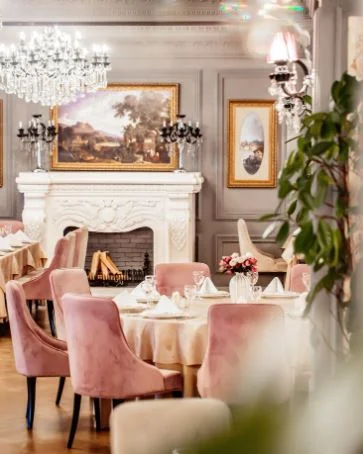The Exquisite Furniture of Catherine the Great: A Legacy of Elegance and Craftsmanship
Introduction
Catherine the Great, the Empress of Russia from 1762 to 1796, is renowned not only for her significant political and cultural contributions but also for her impeccable taste in furniture. The furniture from her era is celebrated for its exquisite beauty, masterful craftsmanship, and the harmonious blend of various European styles. This article delves into the historical significance, design influences, and lasting impact of Catherine the Great’s furniture on modern design.
Historical Context
Born in Prussia, Catherine ascended to the Russian throne following a coup d’état. Her reign, known as the Russian Enlightenment, was marked by cultural flourishing and intellectual exchange. As a patron of the arts and a fervent collector of fine furniture, Catherine’s influence extended beyond politics to transform Russia into a cultural powerhouse. Her era’s political stability and cultural dynamism allowed Russian artisans to innovate, merging local craftsmanship with European design elements.
Influences on Catherine’s Furniture Style
Catherine’s furniture reflects a sophisticated amalgamation of Rococo, Neoclassical, and Baroque styles, each contributing distinct characteristics to the overall aesthetic.
- Rococo Style: Characterized by ornate decorations, asymmetrical designs, and light pastel colors, Rococo furniture added elegance and a whimsical touch to Catherine’s interiors. This style’s intricate carvings and floral motifs embodied the grace and playfulness of 18th-century European art.
- Neoclassical Style: Inspired by the classical art and architecture of Ancient Greece and Rome, Neoclassical furniture emphasized simplicity, symmetry, and grandeur. Catherine embraced this style, commissioning pieces that showcased clean lines, geometric shapes, and classical motifs like laurel wreaths and acanthus leaves. The use of luxurious materials such as malachite, gold, and marble underscored the sophistication associated with Neoclassicism.
- Baroque Style: Known for its boldness, grandeur, and detailed carvings, Baroque furniture was designed to impress and convey power. This style’s dramatic and opulent pieces were a testament to Catherine’s ambition to align Russia with the grandeur of European courts.
Examples of Furniture Pieces
During Catherine’s reign, furniture pieces like intricately carved chairs, grand marble-topped tables, and gold-leaf adorned cabinets became iconic. Each piece was a blend of artistic mastery and functional elegance, reflecting the empress’s refined taste and the high standards of Russian craftsmanship.
Russian Craftsmanship
Russian artisans under Catherine’s patronage were renowned for their skill and innovation. They utilized high-quality materials like Tula steel and Karelian birch to create stunning furniture pieces.
- Tula Steel: Known for its strength and beauty, Tula steel was used to craft decorative items and furniture pieces. The intricate engravings and luxurious finishes of Tula steel furniture showcased the artisans’ exceptional talent and creativity.
- Karelian Birch: This wood, celebrated for its unique grain patterns, was used to create exquisite veneers for cabinets and tables. The intricate marquetry and polished finishes of Karelian birch furniture highlighted the natural beauty of the wood and the craftsmanship of Russian artisans.
Cultural Exchange and Influence
Catherine’s furniture collections symbolize the cultural exchange between Russia and Western Europe during her reign. By incorporating elements of Rococo, Neoclassicism, and Baroque into her furniture, Catherine demonstrated her desire to align Russia with contemporary European artistic trends. This cultural exchange enriched Russian art and design, positioning Russia as a significant cultural player on the European stage.
Legacy and Preservation
Today, many of Catherine the Great’s furniture pieces are preserved in museums and palaces across Russia, including the Hermitage Museum in St. Petersburg. These pieces offer a glimpse into the opulent lifestyle of the Russian court and the artistic achievements of the 18th century. The preservation of these items ensures that future generations can appreciate and learn from Catherine’s rich cultural heritage.
Influence on Modern Design
Catherine the Great’s furniture continues to inspire modern design. The emphasis on craftsmanship, the fusion of different styles, and the use of luxurious materials remain influential in contemporary furniture making. Modern artisans and designers draw inspiration from the past to create pieces that combine historical elegance with contemporary innovation.
Conclusion
Catherine the Great’s furniture collections are a remarkable testament to her patronage of the arts and her influence on Russian culture. By embracing and promoting various European styles while supporting local craftsmanship, she created a unique and enduring legacy in furniture design. Today, her pieces captivate and inspire, offering a window into the opulent world of the Russian court and the artistic achievements of the 18th century. Through her furniture, Catherine the Great’s legacy as a cultural and artistic visionary lives on, reminding us of the timeless beauty and elegance that defined her reign.






